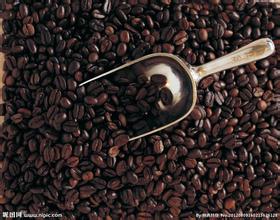Arusha Coffee Manor Sumatra Island Lindong Tanzania
After the coffee is harvested, the peel, pulp, racing peel and silver skin should be removed before shipping. There are two kinds of methods: drying (also known as natural or non-washing) and washing. Dry type: the method is relatively simple. First of all, spread the freshly harvested fruit on the sun field for a week or two until the fruit crackles and dries naturally. After that, the dried pulp, endocarp and silver peel are removed by a sheller. Coffee beans refined in this way are slightly sour and slightly bitter. Almost all coffee beans produced in Brazil, Ethiopia, Yemen and other places are obtained in this way. The disadvantage of this method is that it is easily affected by the weather and is easy to be mixed with defective beans and other impurities. Therefore, it must be carefully screened. Washing type: the fruit that is about to be harvested is put into a flowing trough. After the floating fruit is removed, the skin and flesh are removed by a pulp remover. Then put it in the sink to remove the emerging pulp. After that, move into the fermentation tank, soak for half a day to a day, and then dissolve the gum on the surface of the fermented coffee beans. After washing with water, drying it for a few days, drying it with a machine, and finally using a sheller to remove the endocarp to become a commercial raw coffee bean. In this way, it will be more beautiful in color and less impurity than dried coffee beans. Colombia, Mexico, Guatemala and other countries use this method for about 70% of their production.
How to tell whether coffee beans are good or bad?
Fermented beans fermented coffee beans that fall from the soil before harvest. The moldy smell will have a great impact on the taste of coffee.
Dead beans, also known as unripe beans, or affected by the climate due to red, the development is not perfect. Fried spots will be produced after baking, making the coffee have a green and astringent taste.
Black beans fermented beans, coffee beans that have rotted and blackened. Because it is black, it can be distinguished from normal coffee beans at a glance.
Moth beans Coffee beans infested by insects. Defective beans may be stuck during work, or carelessly handled during handling, resulting in incomplete coffee beans. Will cause fried spots when baking, and will produce bitter and astringent taste.
Other remaining thin-skinned beans, stunted beans, dried beans that do not completely produce moldy flavor, shell beans (shell beans)

Important Notice :
前街咖啡 FrontStreet Coffee has moved to new addredd:
FrontStreet Coffee Address: 315,Donghua East Road,GuangZhou
Tel:020 38364473
- Prev

What brand of coffee beans is better? coffee beans related food information
Hawaii Kona Extra fancy kona beans, considered to be one of the best coffee producing areas in the world, must cover six important factors: soil quality, altitude, sunshine, cloudiness, rainfall and slope. Hawaii is blessed with these six elements to produce the best and most respected coffee in the world. Soil quality: fat and lively Hawaiian tropical volcanic soil.
- Next

How to identify defective coffee beans and how to choose coffee beans that suit your taste
Damage to the refining process, such as shelling, washing, etc., sometimes the damaged edges will turn black. It has the taste of fermentation, mildew, soil and so on, and it is also easy to carbonize and produce scorched taste when baking. Affect the appearance of cooked beans, too much carbonized ingredients will have an adverse effect on health. Other foreign bodies are non-coffee impurities, including branches, stones, copper plates, etc. Produce all kinds of odors. Unfortunately, based on
Related
- Does Rose Summer choose Blue, Green or Red? Detailed explanation of Rose Summer Coffee plots and Classification in Panamanian Jade Manor
- What is the difference between the origin, producing area, processing plant, cooperative and manor of coffee beans?
- How fine does the espresso powder fit? how to grind the espresso?
- Sca coffee roasting degree color card coffee roasting degree 8 roasting color values what do you mean?
- The practice of lattes: how to make lattes at home
- Introduction to Indonesian Fine Coffee beans-- Java Coffee producing area of Indonesian Arabica Coffee
- How much will the flavor of light and medium roasted rose summer be expressed? What baking level is rose summer suitable for?
- Introduction to the characteristics of washing, sun-drying or wet-planing coffee commonly used in Mantenin, Indonesia
- Price characteristics of Arabica Coffee Bean Starbucks introduction to Manning Coffee Bean Taste producing area Variety Manor
- What is the authentic Yega flavor? What are the flavor characteristics of the really excellent Yejasuffi coffee beans?

